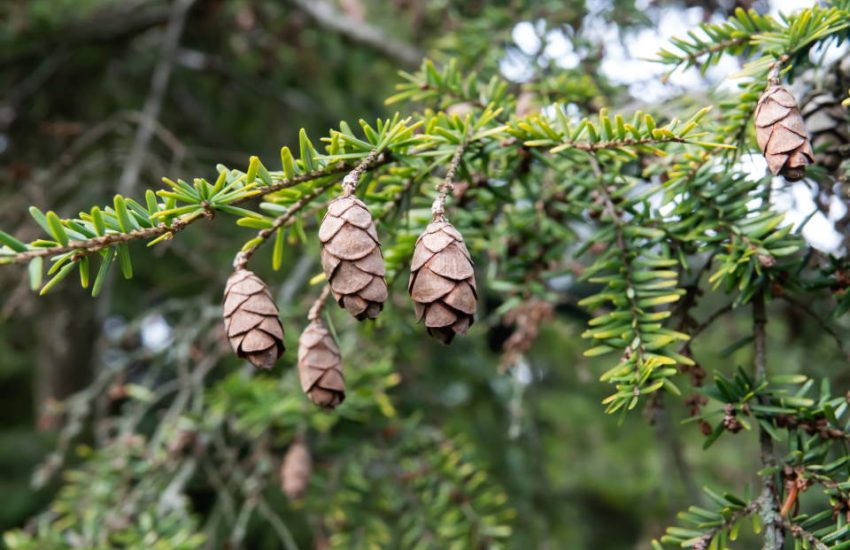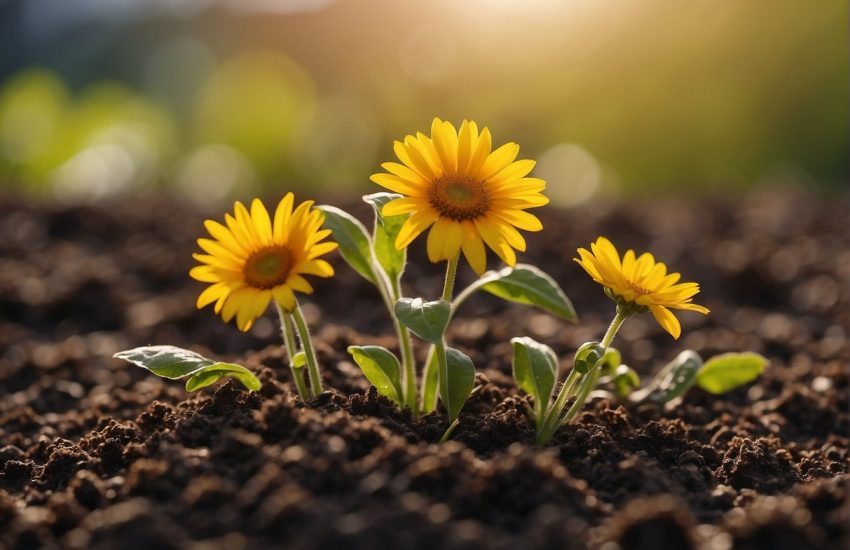Grow Bag for Tomatoes: The Ultimate Guide to Choosing and Using the Right Type
Grow bags have become increasingly popular among gardeners who want to grow tomatoes in small spaces or areas with poor soil quality. These bags are made of durable, breathable fabric that allows for proper drainage and aeration, creating an ideal environment for tomato plants to thrive.

One of the main advantages of using grow bags for tomatoes is their portability. Unlike traditional garden beds, grow bags can be easily moved from one location to another, allowing gardeners to experiment with different growing conditions and sunlight exposure. Additionally, grow bags are easy to store and can be reused for multiple growing seasons.
When it comes to growing tomato plants in grow bags, there are a few key considerations to keep in mind. Choosing the right size bag is crucial, as tomato plants require a certain amount of space to grow and develop properly. It’s also important to select a high-quality potting mix that provides the necessary nutrients and drainage for healthy growth. With the right preparation and care, grow bags can be an excellent option for growing delicious, juicy tomatoes in any space.
Choosing the Right Grow Bag
When it comes to growing tomatoes in a container, choosing the right grow bag is crucial for the success of your plants. There are many types of grow bags available on the market, and it can be overwhelming to decide which one is right for you. In this section, we will discuss some important factors you should consider when choosing the right grow bag for your tomato plants.
Material Differences
The two most common types of grow bags are made of either heavy-duty plastic or woven fabric. Plastic grow bags are durable and can last for several seasons. They are also relatively inexpensive and easy to find. However, plastic bags do not allow for proper aeration and drainage, which can lead to root rot and other issues.
On the other hand, fabric grow bags are breathable and allow for proper aeration and drainage. This helps to prevent overwatering and root rot. Woven fabric bags are also more eco-friendly and can be reused for several seasons. However, fabric bags can be more expensive than plastic bags.
Size Considerations
The size of the grow bag you choose will depend on the size of your tomato plants and how many you plan to grow. It is important to choose a bag that is large enough to accommodate the root system of your plants. Most tomato plants require at least a 5-gallon grow bag, but larger plants may require a 10-gallon bag or larger.
Drainage and Aeration
Proper drainage and aeration are crucial for the health of your tomato plants. Make sure to choose a grow bag with drainage holes at the bottom to allow excess water to escape. It is also important to choose a bag that allows for proper aeration to prevent overwatering and root rot.
In conclusion, choosing the right grow bag for your tomato plants is essential for their success. Consider the material, size, and drainage and aeration when making your decision. By taking these factors into account, you can ensure that your tomato plants will thrive in their new container home.
Preparing Your Grow Bag
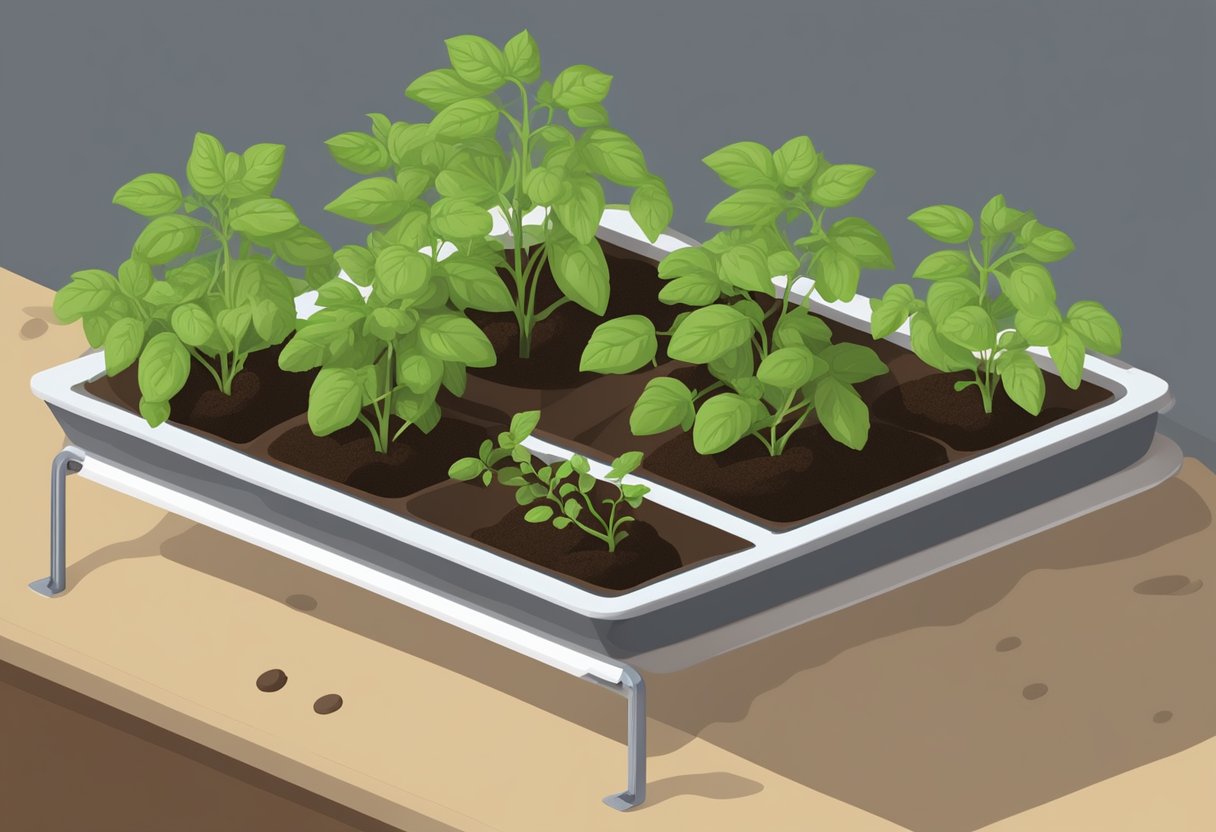
When it comes to growing tomatoes in a grow bag, preparation is key. Here are some important steps to follow when preparing your grow bag.
Selecting Soil and Compost
When selecting soil and compost for your grow bag, it is important to choose a high-quality potting mix that is specifically formulated for container gardening. The potting mix should be well-draining and contain a mix of peat, perlite, and vermiculite to retain moisture and provide aeration.
It is also important to choose a compost that is rich in nutrients. Look for compost that contains a mix of organic matter, such as composted manure, leaf mold, and kitchen scraps.
Adding Fertilizer
Tomatoes are heavy feeders, so it is important to add fertilizer to your grow bag to ensure that your plants have access to the nutrients they need. Look for a slow-release fertilizer that is specifically formulated for tomatoes.
When adding fertilizer to your grow bag, follow the manufacturer’s instructions carefully. Over-fertilizing can lead to nutrient burn and other problems, so it is important to use the right amount.
By following these steps, you can ensure that your grow bag is properly prepared for growing healthy, productive tomato plants.
Planting Tomatoes in Grow Bags
Growing tomatoes in grow bags can be a great option for those with limited garden space or who want to avoid traditional soil-based gardening. Here are some tips for planting tomatoes in grow bags.
Tomato Seedlings
It’s important to start with healthy tomato seedlings. Look for seedlings with sturdy stems and bright green leaves. If starting from seed, make sure to give the seedlings plenty of light and keep the soil moist but not waterlogged.
Spacing and Depth
When planting tomatoes in grow bags, it’s important to give them enough space to grow. A general rule of thumb is to plant one tomato plant per grow bag. Make sure to choose a grow bag that is large enough for the plant to grow in. The depth of the planting hole should be deep enough to accommodate the root ball of the seedling.
Transplanting Tips
When transplanting the tomato seedlings into the grow bag, gently remove the seedling from its original container and loosen the roots. Place the seedling in the planting hole and fill with soil, making sure to cover the root ball completely. Water the plant thoroughly after planting.
Overall, planting tomatoes in grow bags can be a convenient and effective way to grow your own tomatoes. With proper care and attention, your plants can thrive and produce a bountiful harvest.
Caring for Tomato Plants
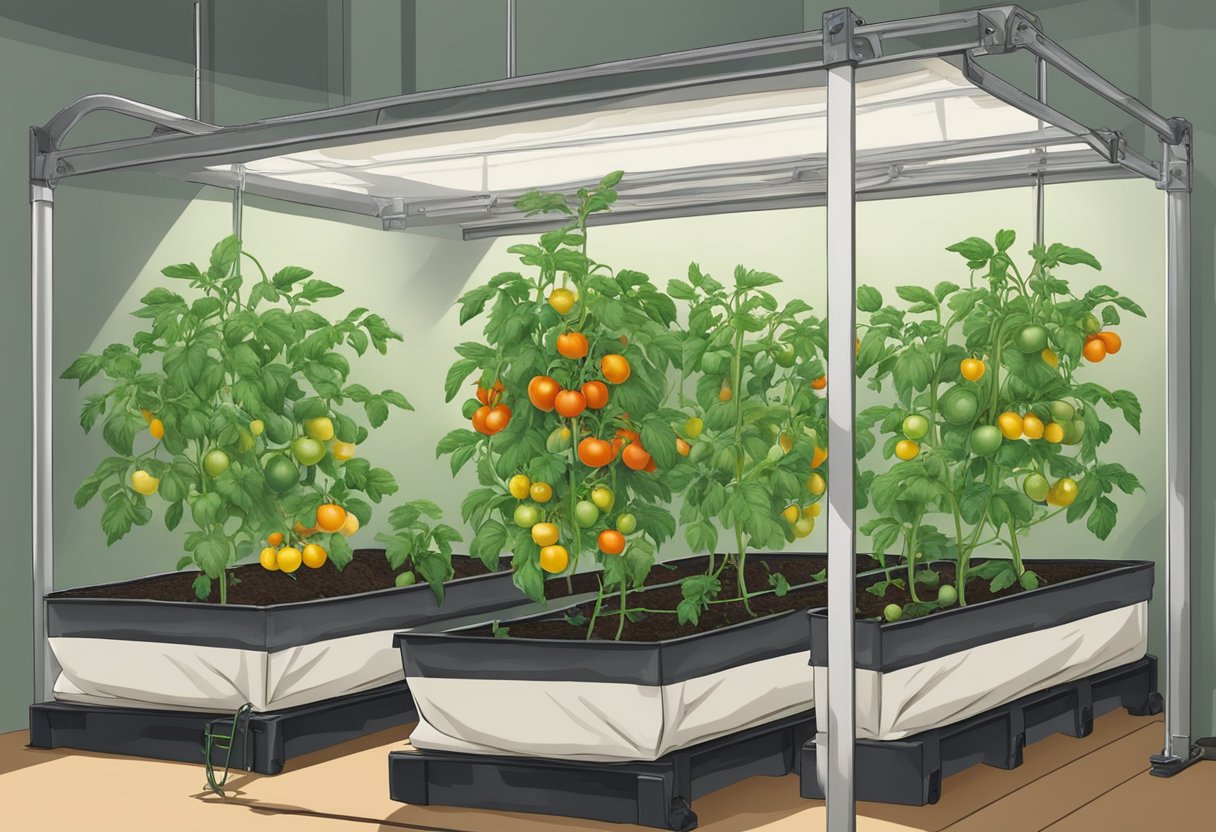
Tomatoes are one of the most popular vegetables to grow in grow bags due to their ease of care and high yield. However, proper care is essential for healthy and productive tomato plants. Here are some tips on caring for tomato plants in grow bags.
Watering Requirements
Tomatoes require consistent and regular watering to thrive. It is important to keep the soil in the grow bags moist but not waterlogged. Water the plants deeply at least once a week, and more often during hot and dry weather. It is best to water the plants early in the morning or in the evening to prevent evaporation. Avoid watering the leaves as this can lead to fungal diseases.
Fertilizing Schedule
Tomatoes need regular fertilization to produce healthy fruits. Use a balanced fertilizer with equal amounts of nitrogen, phosphorus, and potassium. Liquid fertilizer is ideal for grow bags as it can be easily absorbed by the plants. Fertilize the plants every two weeks during the growing season.
Pruning and Training
Pruning and training are essential for healthy and productive tomato plants. Remove the suckers that grow in the crotch between the stem and the branches. This will direct the plant’s energy into producing larger and more flavorful fruits. Use a trellis or stake to support the plants and prevent them from falling over. Prune the lower leaves to improve air circulation and prevent fungal diseases.
By following these simple tips, anyone can grow healthy and productive tomato plants in grow bags. With regular watering, proper fertilization, and pruning, you can enjoy a bountiful harvest of delicious tomatoes.
Supporting Structures for Tomatoes

When growing tomatoes in grow bags, it is important to provide the necessary support for the plants as they grow. This can be achieved through the use of various supporting structures such as stakes, trellises, and tomato cages.
Stakes and Trellises
Staking and trellising are two common methods of supporting tomatoes. Staking involves inserting a sturdy stake into the soil beside the tomato plant and tying the stem of the plant to the stake as it grows. This helps to keep the plant upright and prevents it from falling over. Trellising, on the other hand, involves setting up a framework of stakes and wires or strings for the tomato plant to grow on. As the plant grows, it is trained to climb up the trellis, which helps to keep it off the ground and promotes good air circulation.
Both staking and trellising have their advantages and disadvantages. Staking is a simple and inexpensive method, but it requires more maintenance as the plant grows and needs to be tied to the stake regularly. Trellising, on the other hand, is more complex and expensive to set up, but it requires less maintenance once the framework is in place.
Tomato Cages
Tomato cages are another popular method of supporting tomatoes. These are typically made of wire or plastic and are set up around the tomato plant when it is first planted. As the plant grows, it is supported by the cage, which helps to keep it upright and prevents it from falling over. Tomato cages are easy to set up and require little maintenance, making them a popular choice for many gardeners.
When choosing a supporting structure for tomatoes in grow bags, it is important to consider the size of the plant and the type of tomatoes being grown. Determinate tomatoes, which grow to a certain height and then stop, are best suited for staking or trellising. Indeterminate tomatoes, which continue to grow and produce fruit throughout the growing season, are better suited for tomato cages.
Overall, providing the necessary support for tomatoes is essential for a healthy and productive harvest. Whether using stakes, trellises, or tomato cages, gardeners can ensure that their tomato plants are well-supported and able to thrive in grow bags.
Common Challenges and Solutions
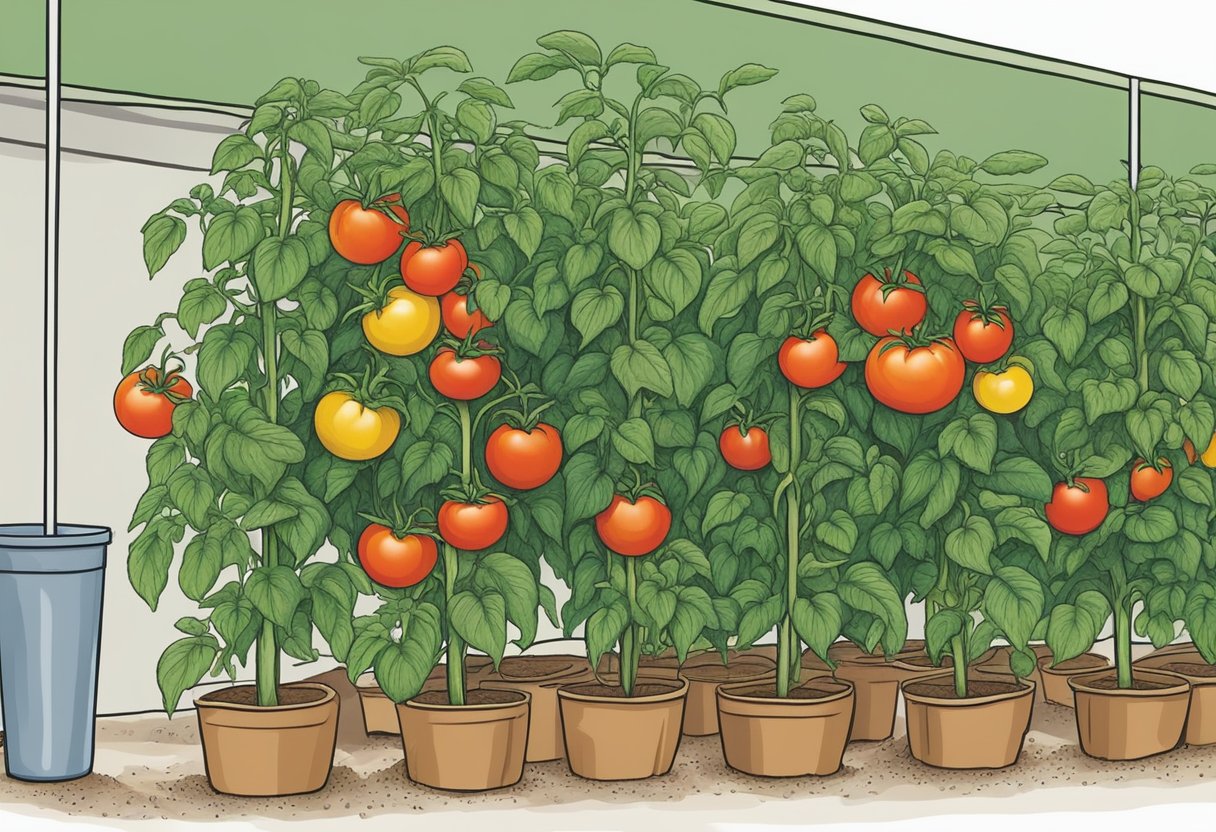
Dealing with Pests and Diseases
Tomatoes grown in grow bags are susceptible to various pests and diseases, which can hinder their growth and reduce yield. Some common pests that can attack tomato plants include aphids, whiteflies, and spider mites. These pests can be controlled by using insecticidal soap or neem oil. It is important to follow the instructions on the label when using these products to avoid damaging the plants.
Diseases that can affect tomato plants in grow bags include blight, leaf spot, and powdery mildew. These diseases can be prevented by ensuring that the plants are not overcrowded and by providing good air circulation. If the plants do become infected, it is important to remove the affected leaves or plants to prevent the disease from spreading.
Preventing Root Rot and Blossom End Rot
Root rot is a common problem in grow bags, especially if the drainage is poor. To prevent root rot, it is important to ensure that the grow bags have good drainage. This can be achieved by making sure that there are enough drainage holes in the bottom of the bag and that the bag is elevated slightly off the ground.
Blossom end rot is another problem that can affect tomato plants in grow bags. This condition is caused by a calcium deficiency in the plants. To prevent blossom end rot, it is important to ensure that the plants are getting enough calcium. This can be achieved by adding calcium to the soil or by using a calcium-rich fertilizer.
By following these simple solutions, gardeners can overcome the common challenges of growing tomatoes in grow bags and enjoy a bountiful harvest of delicious, homegrown tomatoes.
Harvesting and Storage
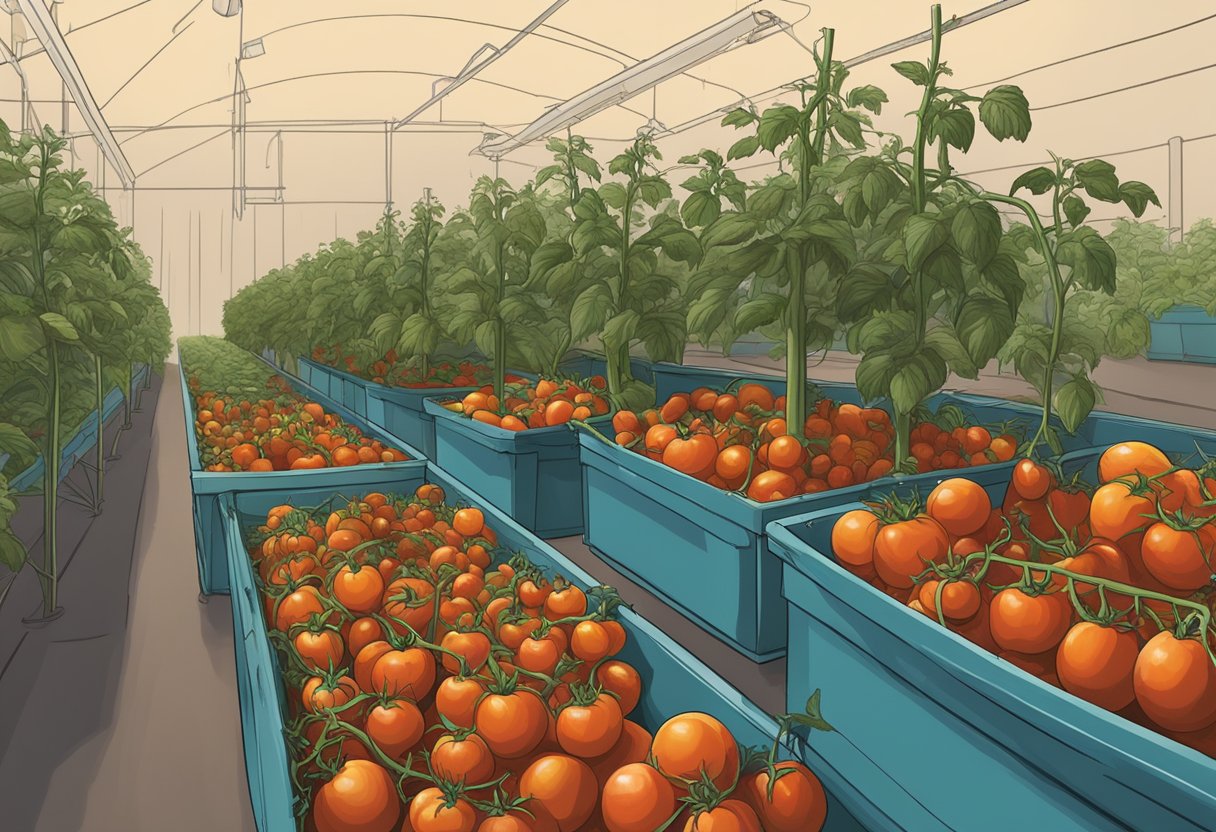
When to Harvest
Knowing when to harvest your tomatoes is crucial to ensure a bountiful harvest of fresh, ripe fruit. The ideal time to harvest tomatoes is when they are fully ripe, which is when they have reached their full color and are slightly soft to the touch. However, if you are planning to store your tomatoes, it is best to harvest them when they are still slightly underripe, as they will continue to ripen off the vine.
To determine if a tomato is ripe, gently press on the fruit with your fingers. If it yields slightly to the pressure, it is ready to be harvested. If it is still firm, it needs more time to ripen. It is important to harvest your tomatoes before they become overripe, as they will start to lose flavor and texture.
Storing Tomatoes
Proper storage is key to preserving the flavor and quality of your tomatoes. If you are planning to use your tomatoes within a few days of harvesting, you can simply store them at room temperature in a cool, dry place out of direct sunlight.
If you need to store your tomatoes for a longer period of time, it is best to place them in a single layer in a cardboard box or on a tray lined with paper towels. Make sure to leave some space between the tomatoes to allow for air circulation. Store the box or tray in a cool, dry place such as a basement or pantry.
Avoid storing your tomatoes in the refrigerator, as this can cause them to lose flavor and texture. Additionally, do not store your tomatoes near fruits that produce ethylene gas, such as apples and bananas, as this can cause them to ripen and spoil more quickly.
By following these simple tips, you can enjoy a bountiful harvest of fresh, flavorful tomatoes all season long.
Advantages of Grow Bags Over Traditional Methods
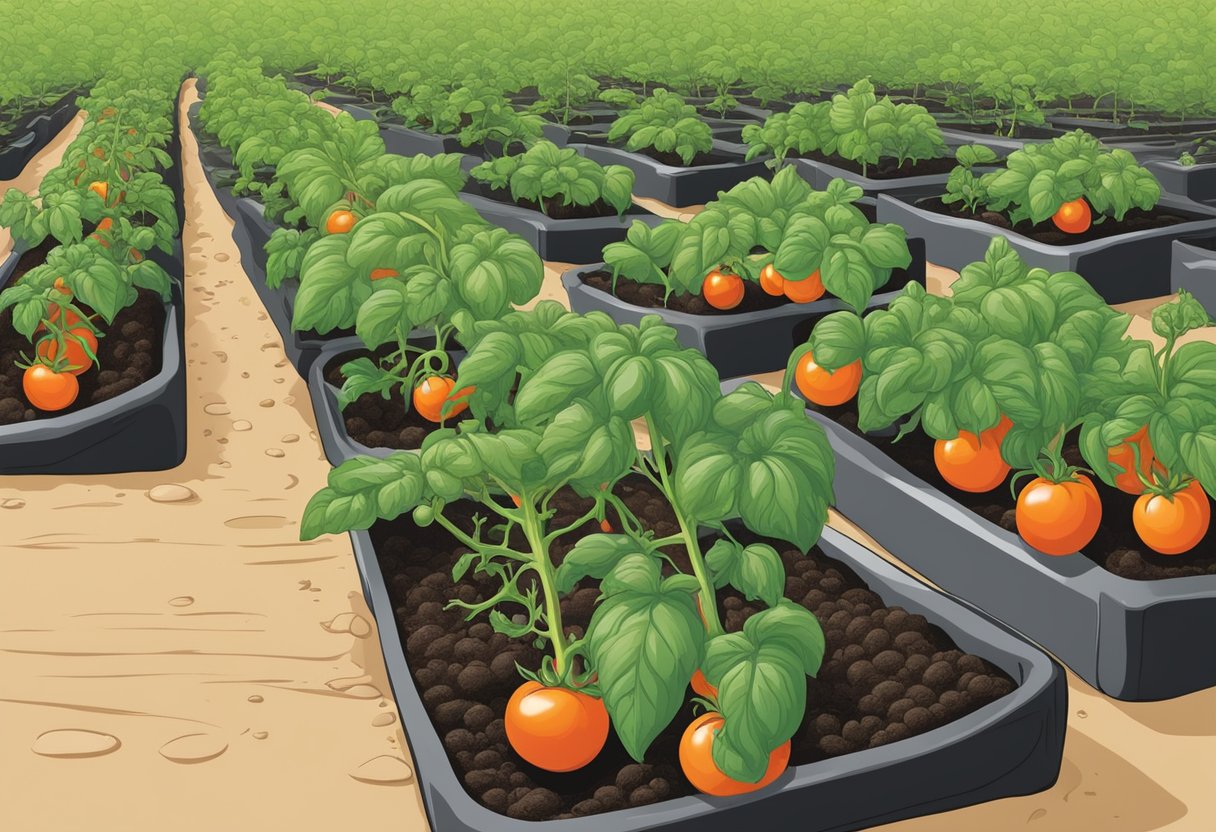
Grow bags are becoming increasingly popular among gardeners due to their numerous advantages over traditional methods of gardening. Here are some of the advantages of using grow bags for growing tomatoes:
Portability and Versatility
One of the biggest advantages of grow bags is their portability. Unlike traditional gardening methods, grow bags can be easily moved around, making them ideal for those who have limited space or who want to grow tomatoes in different areas of their yard. They are also versatile and can be used on patios, balconies, or even indoors.
Enhanced Plant Health
Grow bags provide a healthier environment for tomato plants. The fabric pots allow for better aeration and drainage, preventing waterlogging and root rot. This, in turn, leads to healthier and stronger plants that produce better yields. Additionally, grow bags are less likely to harbor pests and diseases that can damage tomato plants.
Eco-Friendly Options
Grow bags are also an eco-friendly option for gardening. Fabric pots are made from biodegradable materials and can be easily disposed of without causing harm to the environment. They are also a great alternative to raised beds, which require a lot of resources to build and maintain.
In summary, grow bags offer numerous advantages over traditional gardening methods. They are easy to use, compact, healthy, portable, and eco-friendly. With the right care and attention, tomatoes grown in grow bags can produce healthy and abundant yields.
Frequently Asked Questions
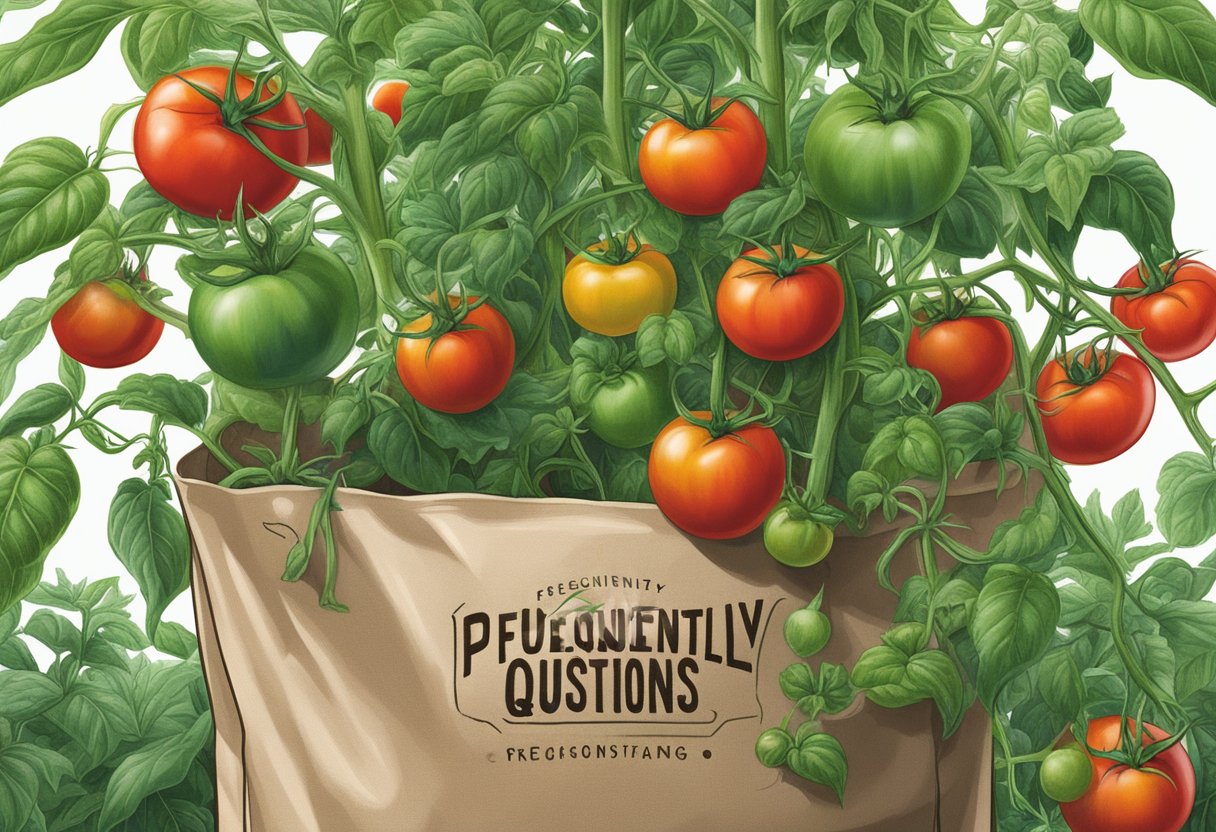
What are the best materials for homemade tomato grow bags?
There are several materials that can be used to make tomato grow bags at home, including burlap, landscape fabric, and even old t-shirts. However, it is important to ensure that the material is breathable, durable, and can hold moisture well. Avoid using plastic bags, as they can trap moisture and cause root rot.
How do you properly support tomato plants in grow bags?
Tomato plants need support as they grow, especially when grown in grow bags. The best way to support them is by using stakes or cages. Place the stake or cage in the grow bag before planting the tomato plant, and gently tie the stem to the support as it grows. This will prevent the plant from falling over and breaking.
What is the ideal size for a tomato grow bag?
The ideal size for a tomato grow bag depends on the size of the tomato plant and the space available. A 5-gallon grow bag is a good size for smaller tomato plants, while larger plants may require a 10-gallon or even a 20-gallon grow bag. It is important to ensure that the grow bag is deep enough to accommodate the plant’s root system.
How many tomato plants can fit in a standard grow bag?
The number of tomato plants that can fit in a standard grow bag depends on the size of the bag and the size of the plants. A 5-gallon grow bag can accommodate one small tomato plant, while a 10-gallon grow bag can fit two to three small plants or one large plant. It is important to avoid overcrowding the grow bag, as this can lead to stunted growth and poor yields.
Which type of soil yields the best results for tomatoes in grow bags?
Tomatoes grown in grow bags require a well-draining soil that is rich in nutrients. A good soil mix for tomato grow bags should contain equal parts of peat moss, perlite, and compost. It is important to avoid using garden soil, as it can contain pests and diseases that can harm the plants.
Do darker colored grow bags enhance tomato growth?
There is no scientific evidence to suggest that darker colored grow bags enhance tomato growth. However, darker colored bags may absorb more heat, which can be beneficial in cooler climates. It is important to ensure that the grow bag is made of breathable material, regardless of its color.

